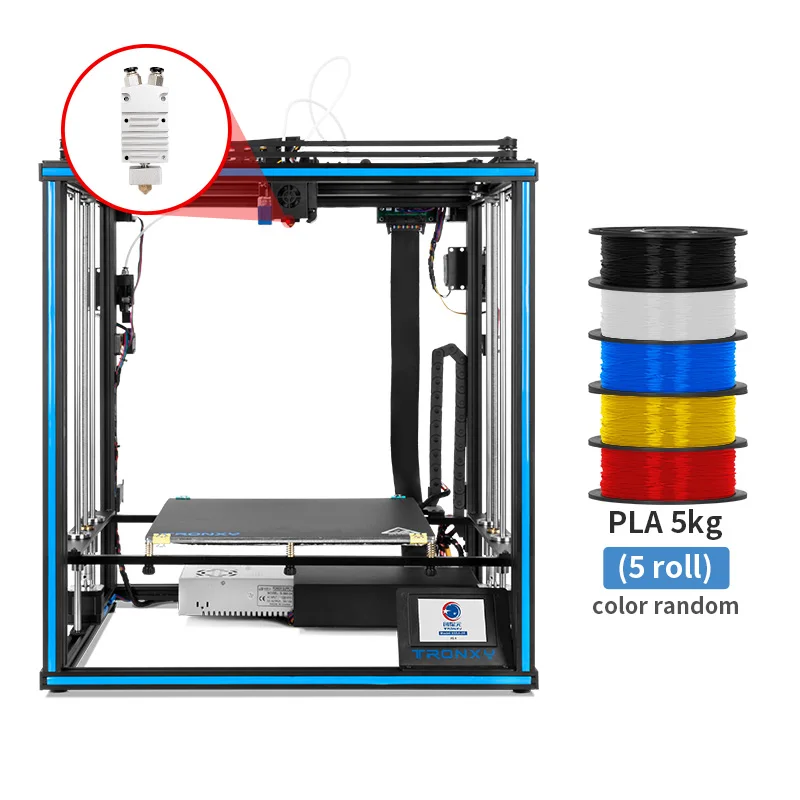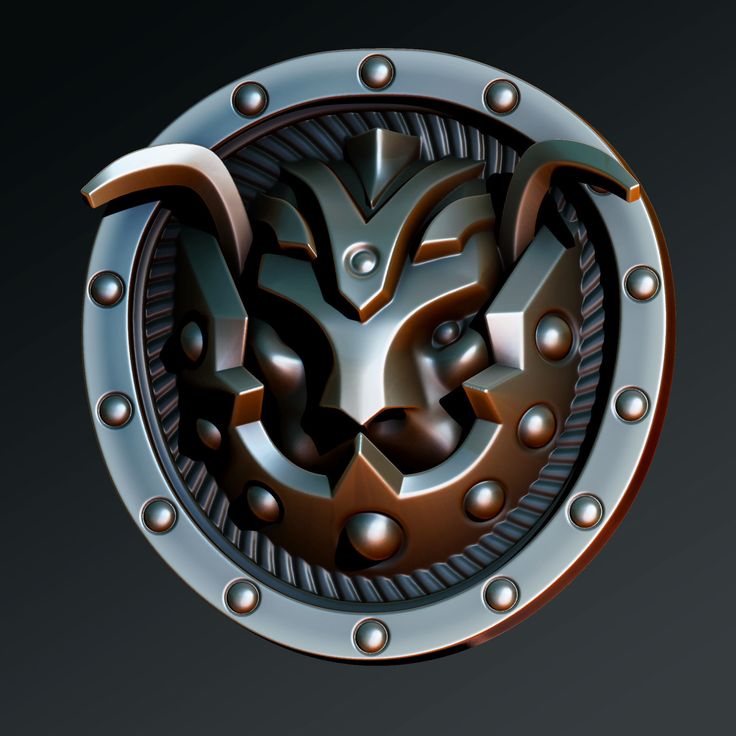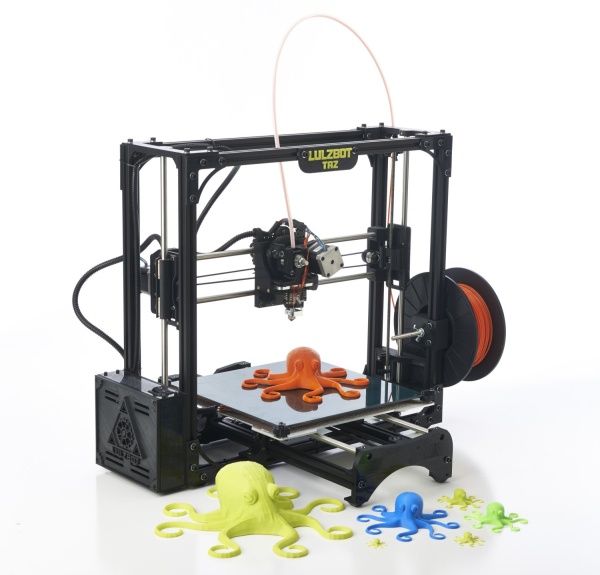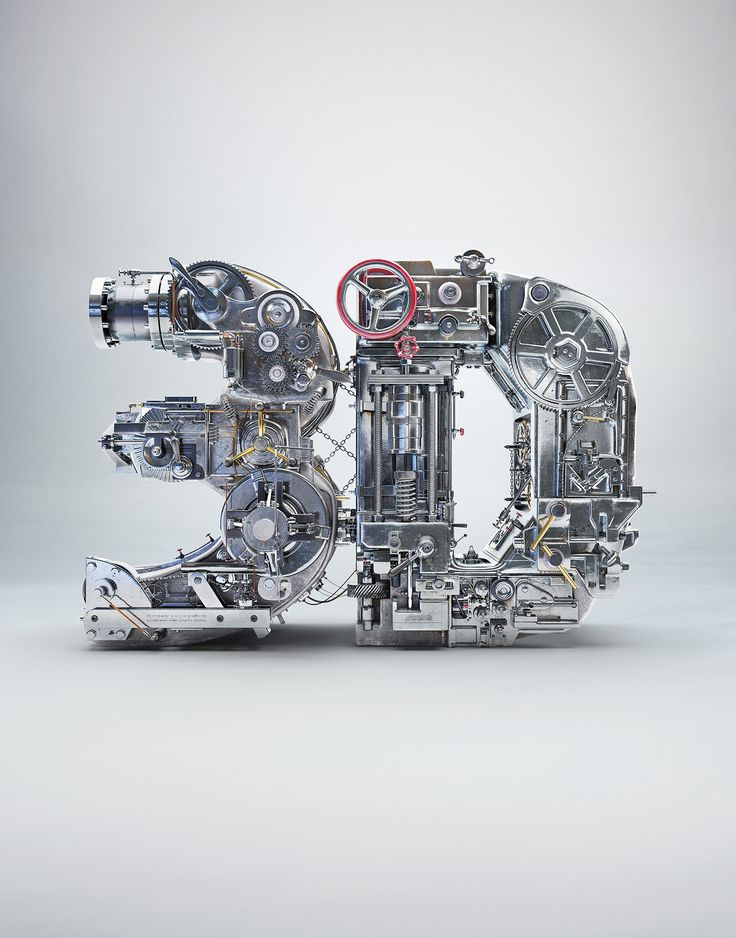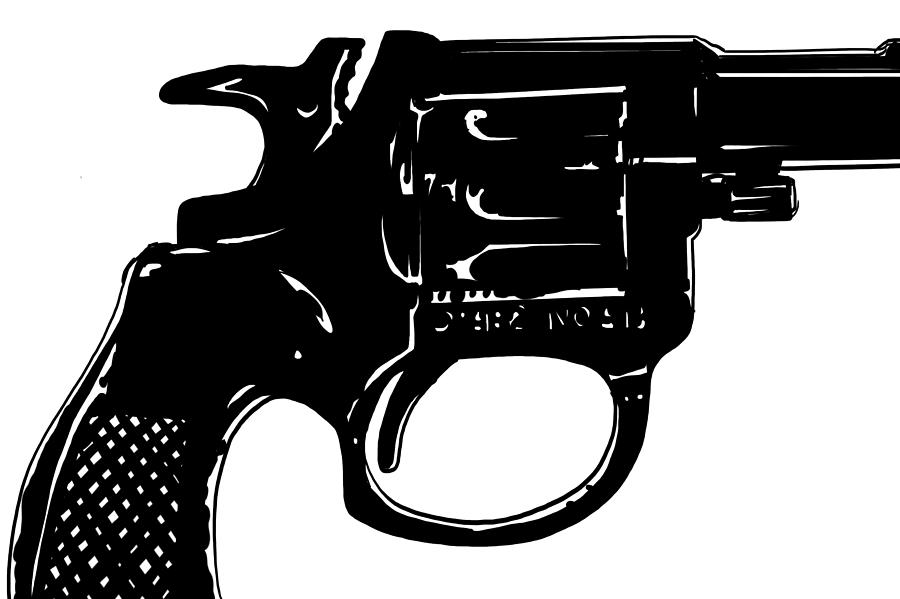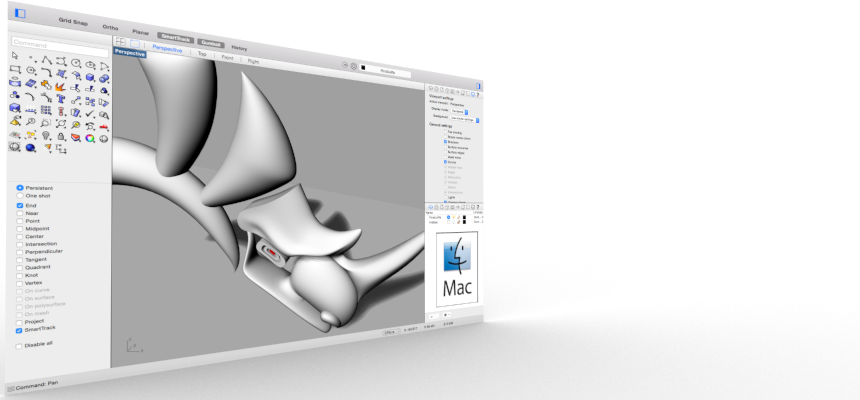How much is a good 3d printer
How Much Does A 3D Printer Cost?
Here’s a quick guide for 3D printer costs; what prices you should expect to pay and what kind of features will accompany each:
Entry Level 3D Printers ($100-$500):
Printers in this category are primarily toys but are a great way to experiment and learn about 3D printing. You will likely have to spend a considerable time assembling, calibrating and testing before you are able to print. They will only be able to print objects around 3-4″ in each dimension (width, length, height) and likely limited to printing in one material. These printers are slow, noisy, have poor print quality and not very durable. A lack of enclosed print space will limit you to only printing low-temperature materials such as PLA. However, for printing small objects and getting a feel for how a 3D printer works, they do the job.
Hobbyist 3D Printers ($400-$1500):
Printers in this category are often surprisingly capable, but often have 1-2 fatal flaws that undermine their value. Many 3D printers in this category require you to spend a considerable time assembling, calibrating and testing before you are able to print.These prints can often print a bit larger than entry-level printers, perhaps 5-6″ in each dimension. They are a bit faster and might be able to print a few different materials. You’ll often find that their speeds and print quality are lacking. Most of the printers in this class are not made to run for significant lengths of time and you’ll have to do a lot of repairs / maintenance to keep them running. Most 3D printers in this category will not be enclosed, also limiting you to only printing low-temperature materials such as PLA. These printers are good for someone who likes 3D printing as a hobby, perhaps for use by grade schools. However, these printers are not at all suitable for commercial use or in educational settings where you need them to print at specified times reliably.
Enthusiast 3D Printers ($1,000-$4,000):
The enthusiast category is exploding and delivering solid printers that are great for certain applications. Printers in this category can deliver good sized prints; often as large as 8″ to 12″ in each dimension. Printers in this category have reasonable speed and decent print quality (note: for most printers, slower speeds are required to generate good print quality; conversely the faster they print, you will sacrifice print quality). In this category, you’ll have greater selection in materials that can print, although some enthusiast printers require you to use the manufacturer’s standard materials which limit your options. Unfortunately, many printers in this price range are still not very durable and will require significant maintenance and repairs if you plan to operate them for significant amounts of time (40+ hours per month). These printers are appropriate for use in grade schools and infrequent use in high schools. Some businesses might find them suitable, but will often be frustrated by repairs if used frequently.
Printers in this category can deliver good sized prints; often as large as 8″ to 12″ in each dimension. Printers in this category have reasonable speed and decent print quality (note: for most printers, slower speeds are required to generate good print quality; conversely the faster they print, you will sacrifice print quality). In this category, you’ll have greater selection in materials that can print, although some enthusiast printers require you to use the manufacturer’s standard materials which limit your options. Unfortunately, many printers in this price range are still not very durable and will require significant maintenance and repairs if you plan to operate them for significant amounts of time (40+ hours per month). These printers are appropriate for use in grade schools and infrequent use in high schools. Some businesses might find them suitable, but will often be frustrated by repairs if used frequently.
Professional 3D Printers / Performance 3D Printers ($4,000-$20,000):
The performance category holds the promise of the greatest amount of value in 3D printing today and are poised to significantly disrupt the sales of printers in the industrial segment.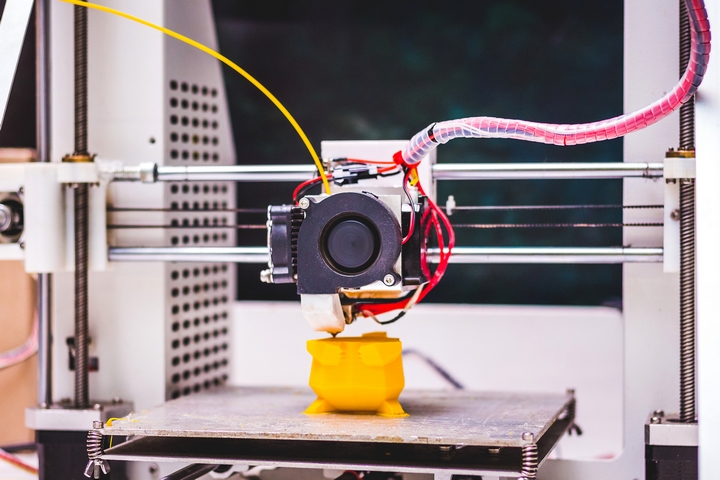 Some 3D printers in this category have large, enclosed build areas (12″ in each dimension) and often can print pretty good quality parts out of higher temperature materials like ABS, Nylons, Carbon Fiber reinforced and Polycarbonate. Most printers in this category can print a wide range of materials, although to print them well, the manufacturer should provide print ‘profiles’ optimized to each material for their slicer software.
Some 3D printers in this category have large, enclosed build areas (12″ in each dimension) and often can print pretty good quality parts out of higher temperature materials like ABS, Nylons, Carbon Fiber reinforced and Polycarbonate. Most printers in this category can print a wide range of materials, although to print them well, the manufacturer should provide print ‘profiles’ optimized to each material for their slicer software.
When shopping for a performance printer, there are 2 key features to look for:
First, the best performance printers have the ability to print parts both quickly while maintaining superior print resolution. Don’t only rely on published specifications; you need to look at a physical sample print and evaluate the settings the print was done at along with the actual time to print.
Second, when making the sizable investment required by this price class, you want to evaluate the durability of the printer and required maintenance as this will still vary greatly.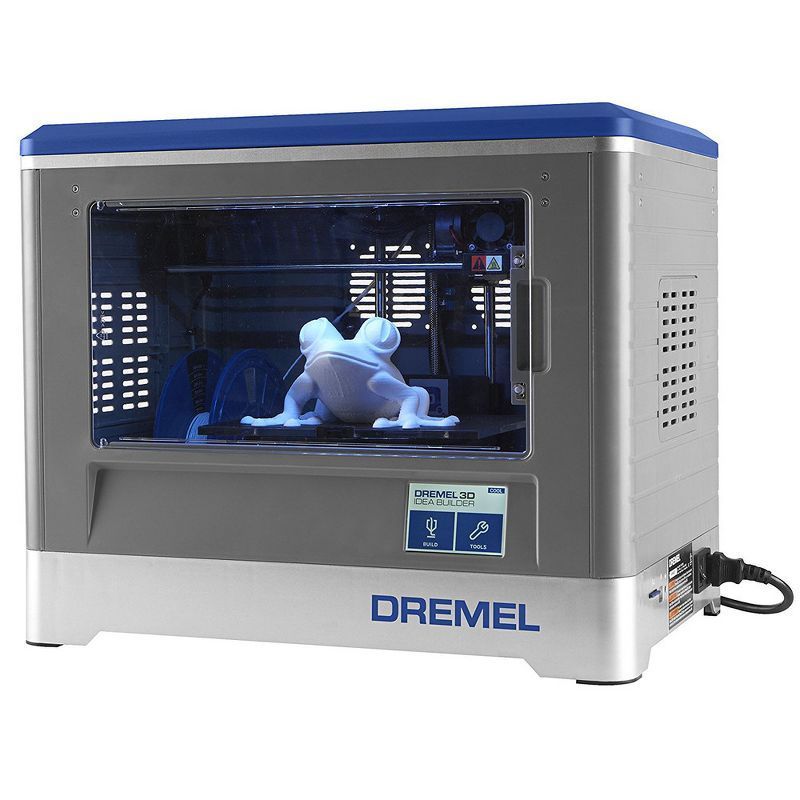
Printers in this class are perfectly suitable in Education (middle schools, high schools, universities and robotics clubs) as well as in a wide range of commercial environments (small business to large enterprises).
Fusion3 offers a Performance-grade 3D printer that is one of the most affordable you’ll find on the market, with all of the capabilities you look for in a Professional / Performance 3D Printer.
Enterprise (Industrial) 3D Printers ($20,000 – $100,000):
The printers in the Enterprise class differ from the Performance class in a few ways. These printers can print in high quality at good speeds, however you pay a significant premium for this privilege. These printers have very slick interfaces and durable construction and metal fabricated exteriors. Enterprise manufacturers charge a high price for the base printer, but also charge annual maintenance contracts as well as require you to purchase proprietary materials at a premium to those available on the open market. Also, the selection of materials in this space are surprisingly limited and expensive, often priced at three to five times what the material would cost on the open market. While these printers are durable and reliable, their price makes them only appropriate for large enterprises who can afford their large price tag. This price tag makes this class of printers prohibitively expensive for most universities. The irony of these machines is that due to the high operating costs, one can argue there is a disincentive for encouraging their use by employees & students. Because of this, the Performance class of 3D printers becomes an attractive alternative to Enterprise printers for a wide variety of businesses.
Also, the selection of materials in this space are surprisingly limited and expensive, often priced at three to five times what the material would cost on the open market. While these printers are durable and reliable, their price makes them only appropriate for large enterprises who can afford their large price tag. This price tag makes this class of printers prohibitively expensive for most universities. The irony of these machines is that due to the high operating costs, one can argue there is a disincentive for encouraging their use by employees & students. Because of this, the Performance class of 3D printers becomes an attractive alternative to Enterprise printers for a wide variety of businesses.
How much does a 3D printer cost? (2022 update)
David Durbin13 January 2022
Guide
| 3D printer category | Average price |
|---|---|
| Low-cost 3D printers | $100 - $400 |
| Hobbyist 3D printers | $400 - $1,000 |
| Enthusiast 3D printers | $1,000 - $3,000 |
| Professional 3D printers | $3,000 - $10,000 |
| Industrial 3D printer price | $10,000+ |
If you're wondering how much a 3D printer costs. Or, if a 3D printer is worth it. You're in the right place.
Or, if a 3D printer is worth it. You're in the right place.
The good news is this: These days you can find almost any 3D printer for any budget.
And while the average 3D printer price across the market is around $400...
That average is pulled down because of the high volume of low-cost 3D printers sold.
So is it worth it to buy a 3D printer in 2022? If yes, what is the best 3D printer for the price? And are there price range “sweet spots” that you should look out for?
You can prepare yourself to answer these questions by asking yourself:
Am I looking for a hobby or a tool?
And you can get the full answers by reading below.
How much does a 3D printer cost? Low-cost 3D printer prices start from $100 to $400. Then hobbyist 3D printers will set you back by up to $1,000. The next level of enthusiast and professional 3D printer prices range between $1,000 to $10,000. After that, the sky’s the limit – with industrial 3D printer prices starting at $10,000 but quickly reaching $100,000 or $250,000 for specialist technologies.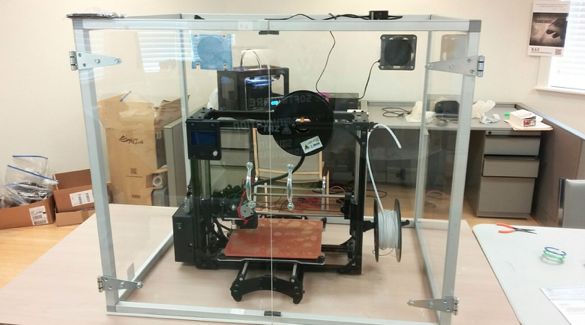
If you're looking to find out exactly how much Ultimaker printers cost, you can request a quote to find out now.
Request a quoteDIY / Low-cost 3D printer price $100 - $400
Low-cost 3D printers are all about the novelty of the technology. They exist for newbies who want to say, "Hey – check out what I just 3D printed!" Almost all will come as kits that the buyer puts together. And while these machines might have beginner-friendly price tags... It won't be a beginner who can get them to produce a good 3D print. That's because manufacturing problems are too common to overlook. And these lead to a painful setup and user experience. Also, when asking how much does a basic 3D printer cost? This tier can save you money. But expect to pay more for modifications, upgrades, and repairs down the line. That said, if it's a choice between "having a 3D printer" and "not having a 3D printer", this tier offers the biggest bang for your buck.
The Ultimaker Original was sold as DIY 3D printer that you put together yourself
Hobbyist 3D printer price $400 - $1,000
3D printers at this price range can produce some great parts and models.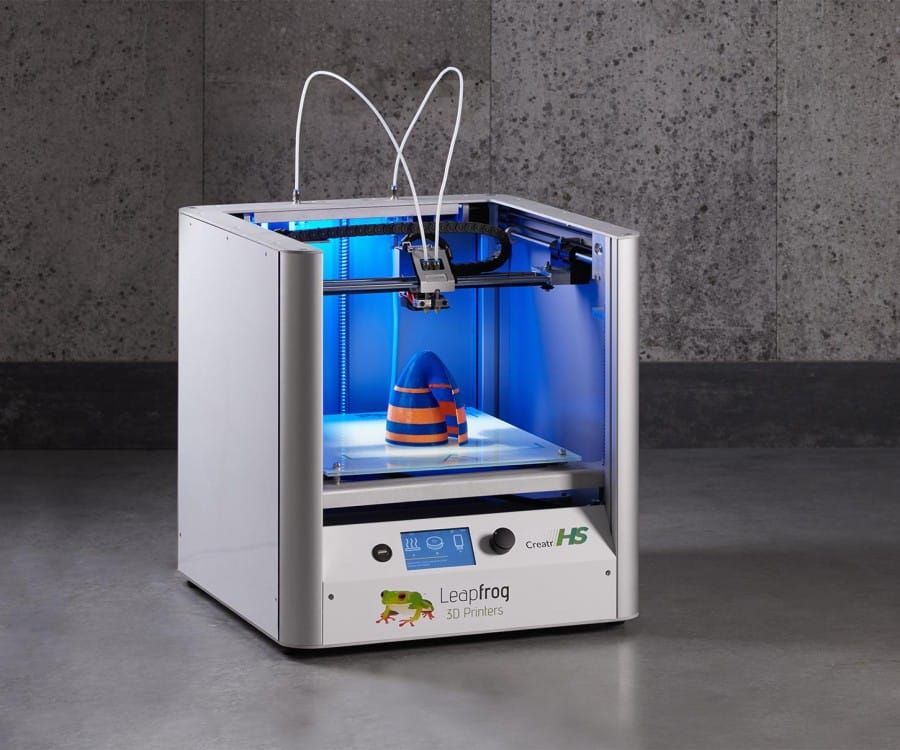 But that's only after you have set them up and dialed in their settings. In this way, they are aimed at hobbyists. (People who are happy to spend time watching tutorials and tweaking settings to improve their prints.) This also limits your flexibility. Over time, you might be able to 3D print well with a basic material like PLA. But don't expect to switch filaments too easily. While these machines are often delivered as kits, manufacturing problems are less common.
But that's only after you have set them up and dialed in their settings. In this way, they are aimed at hobbyists. (People who are happy to spend time watching tutorials and tweaking settings to improve their prints.) This also limits your flexibility. Over time, you might be able to 3D print well with a basic material like PLA. But don't expect to switch filaments too easily. While these machines are often delivered as kits, manufacturing problems are less common.
Enthusiast / Prosumer 3D printer price $1,000 - $3,000
Up until this price range, almost all the 3D printers will have had an open design. But now you will begin to see more partially and fully enclosed printers that increase safety and print reliability. This also marks the end of the hobbyist range. And the start of 3D printing becoming a useful production tool. Therefore, the enthusiast and prosumer category is great for lower and higher education customers who want to avoid spending time on maintenance. Plus, they present a smart option to 3D print cheaply at home.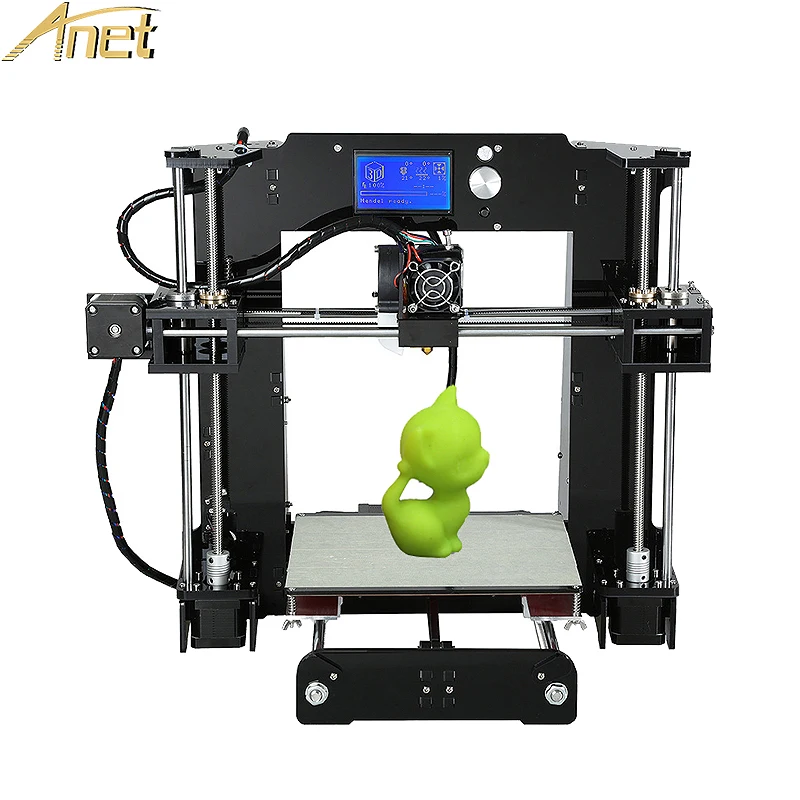 These machines can 3D print a handful of materials with good reliability. However, these will often be own-brand filaments with carefully tweaked settings. The best enthusiast 3D printers include hardware and software features taken from the professional 3D printer price tier. On which note...
These machines can 3D print a handful of materials with good reliability. However, these will often be own-brand filaments with carefully tweaked settings. The best enthusiast 3D printers include hardware and software features taken from the professional 3D printer price tier. On which note...
Safer, more reliable, and low maintenance – Enthusiast 3D printers are a great option for schools
Professional 3D printer price $3,000 - $10,000
A lot changes at this price point. Instead of being a technology to tweak and adjust, these 3D printers focus on easy use and adoption. They become one tool among many in an engineer's or designer's toolbox – giving a growing number of businesses a new way to innovate. And that's why, at this price point, FFF 3D printing is at its most disruptive. The only way this can happen is for the 3D printer to work – and for it to work hard. Expect a factory-tested machine that you can leave running over the weekend and come back to a finished part on Monday morning. Plus, prints start being repeatable. For example, if you 3D print the same part on the same printer in two or more locations...the part quality should be almost identical. The user also has more flexibility. You can choose to print with a build material and a support material in the same print (called dual extrusion), offering more design freedom. And you gain a growing range of engineering-grade material options. These can include materials reinforced with carbon fiber or even metal.
Plus, prints start being repeatable. For example, if you 3D print the same part on the same printer in two or more locations...the part quality should be almost identical. The user also has more flexibility. You can choose to print with a build material and a support material in the same print (called dual extrusion), offering more design freedom. And you gain a growing range of engineering-grade material options. These can include materials reinforced with carbon fiber or even metal.
Professional 3D printers are workhorse tools for an increasing number of engineers and designers
Industrial 3D printer price $10,000+
3D printers that cost tens or hundreds of thousands are made to do a few things at a high level of quality. This includes production technology for specific materials, like high-temperature polymers or metal. 3D printing these materials with a high success rate often requires you to stay within a manufacturer's material portfolio and software stack. If you are in the market for an enterprise-level machine, this will rarely be the first 3D printer your company buys.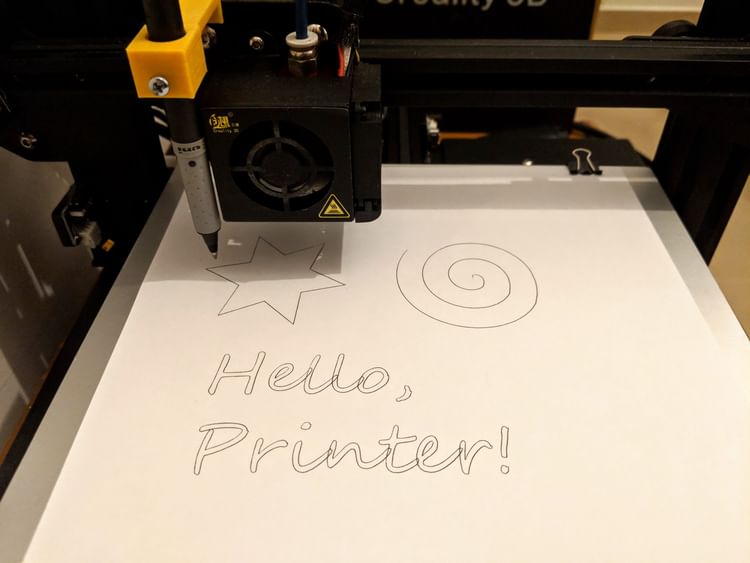 And you will know what's required to make the investment: a strong business case, competitor analysis, and a purchase order. You or your company may be happy to pay extra for increased speed, accuracy, and reliability. But also know that, the higher you go in this price bracket, the more you chase diminishing returns.
And you will know what's required to make the investment: a strong business case, competitor analysis, and a purchase order. You or your company may be happy to pay extra for increased speed, accuracy, and reliability. But also know that, the higher you go in this price bracket, the more you chase diminishing returns.
Is a 3D printer worth it?
These five price tiers cover the majority of 3D printers sold today.
If you consider 3D printing as a hobby, 3D printing successfully will largely be paid for with your time and patience. If 3D printing needs to be a tool for you, then you will pay extra for a user experience that saves time and attention.
But it's also in this second category where 3D printing offers significant business value. And the right 3D printer can end up paying for itself with substantial time and cost savings.
The total cost of 3D printing
Finding the best 3D printer for the price, then, is not only about the machine you buy. The picture is bigger than just the initial price tag.
It's also about the software, accessories, materials, and service that go with it. Together, these contribute to an easy-to-use, time and cost-saving 3D printing experience.
The Ultimaker platform creates a seamless flow between hardware, software, and materials
For example, every Ultimaker 3D printer works seamlessly with Ultimaker Cura, which is updated every few months. They also ship with a suite of free online tools and e-learning courses. Together these resources transform your ability to click-and-print with up to 239 materials.
So it's no surprise that hundreds of leading companies – from Ford to L'Oréal – 3D print day and night with the Ultimaker platform to drive innovation and sustain their competitive advantage.
If you would like to do the same, click below to find out more.
Discover Ultimaker 3D printers
How much does a 3D printer cost?・Cults
How much does a 3D printer cost? This question is asked by many beginners, hobbyists and enthusiasts. While the answer may be a little complicated, our goal is to simplify the process and help you choose the right printer for your skill level. There are many different 3D printers on the market. Some are small, cheap, and designed for do-it-yourselfers, others are full of features and cost much more.
While the answer may be a little complicated, our goal is to simplify the process and help you choose the right printer for your skill level. There are many different 3D printers on the market. Some are small, cheap, and designed for do-it-yourselfers, others are full of features and cost much more.
However, this does not mean that you have to spend a fortune to get a good printer. The cost of 3D printers has come down a lot over the years and you can now find good 3D printers for under $300. While they may not have some of the features found on a $20,000 printer, you can still use them to create interesting projects. Many of these cheap printers are for beginners, hobbyists, or those who want to learn how to 3D print.
So how much does a 3D printer cost? Basically, you can find starter models for $200. Mid-range consumer models start at around $700, while commercial or high-end consumer models will set you back thousands of dollars. In this article, we will answer some questions about 3D printers and provide you with an informative guide to choosing the best printer for your skill level.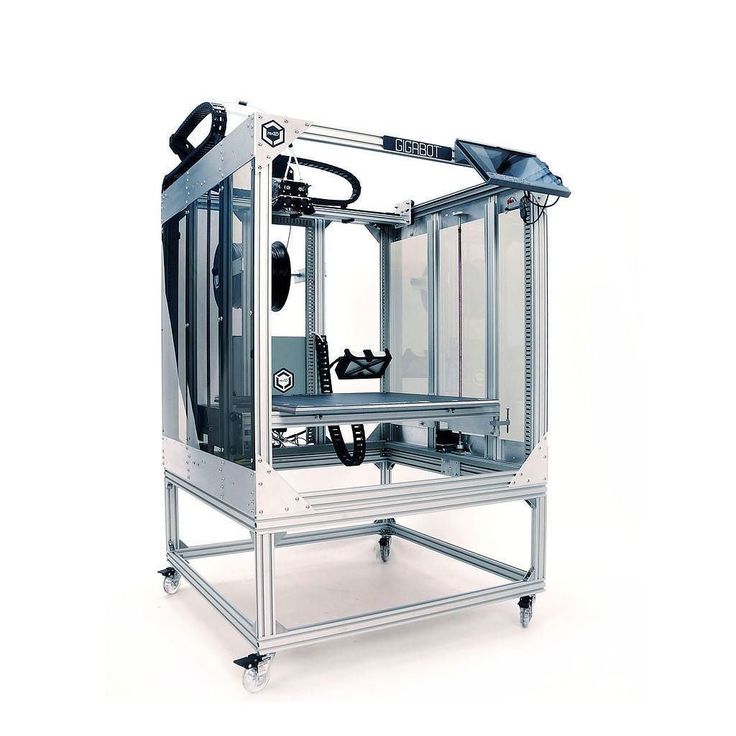
If you're an engineer, artist, inventor, hobbyist, or just a tinkerer, a 3D printer is definitely worth it. 3D printers are very useful for creating models of machines, parts, fixtures, gears, and other complex shapes. This technology is used in many areas, including aerospace, medicine, all kinds of mechanical engineering, etc.
If you love building, fixing and fiddling with things, a 3D printer can be a great addition to your equipment. However, if you're not into any of the above areas or hobbies, getting a 3D printer might not be worth it. In addition, before purchasing a printer, you need to make sure that you are technically literate enough to operate it. This is because such printers require regular updates/upgrades and the learning curve can be quite steep.
You will need to regularly buy filaments, learn how to design in 3D CAD or use other modeling software. Also, you may have to fiddle with your machine settings before you find the right fit. If you are completely new, using a 3D printer will take you a lot of time and you may end up spending a lot of money on filaments and other materials. However, once you get the hang of it, 3D printing can quickly turn into one of the most enjoyable activities or hobbies one can indulge in.
However, once you get the hang of it, 3D printing can quickly turn into one of the most enjoyable activities or hobbies one can indulge in.
In addition to the initial purchase cost, the cost of using a 3D printer can quickly increase depending on the model you purchase. For the cheapest models, you will have to constantly buy printer upgrades. Therefore, it is recommended to purchase a high-quality printer with better specifications so that you do not have to upgrade from time to time.
Another item that can increase the cost of a 3D printer is filaments. They usually sell for around $25 per kilo, so beginners are advised to buy them in small quantities. This is because you will need multiple colors to create models, and buying a kilo of each can quickly add up to hundreds of dollars. Another thing you will waste is time. If you're just getting started, you'll have to take the time to learn about your printer, how to make great 3D prints, the right software and updates, color combinations, material composition, and many other important factors.
Definitely yes. In fact, there are many different ways to make money with 3D printers. Below are the top four ways to make money with these printers:
- Prototyping and Selling : You can make money by offering to prototype for local engineering firms. Since 3D printing involves learning how to create 3D designs, you can sell your designs or create designs for engineering firms.
- Sell your prints : You can sell your printed objects online. Create a website or social media campaign and sell your designs. You can also create custom prints for your clients; they will provide you with the design and you will print it for them.
- Sell your designs : You don't have to print to make money. You can just sell your 3D designs and skip the whole printing process.
- Teach others : Many people are interested in the knowledge you have about printing. Engineers, students, DIYers and hobbyists will be happy to learn from you.
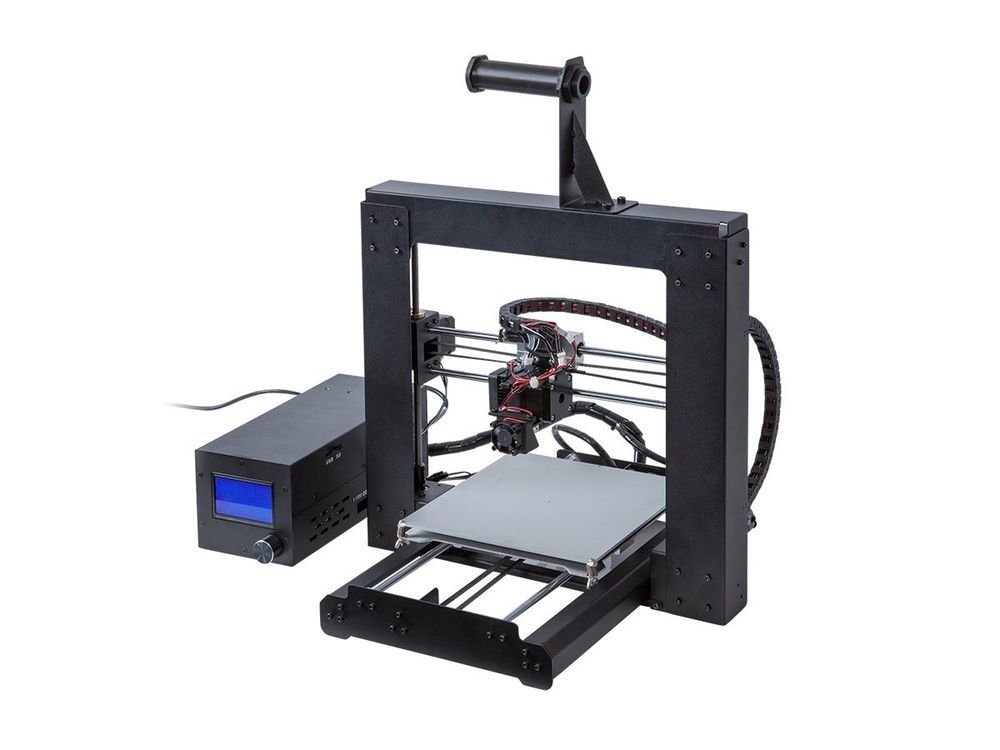 You can simply charge them and teach them how to use and set up their own printers, what materials to use, how to print, and so on.
You can simply charge them and teach them how to use and set up their own printers, what materials to use, how to print, and so on.
As we noted above, the cost of 3D printers has dropped significantly because there are now models that have few features but are cheaper. Basically, there are five different types of 3D printers based on price. These are entry-level printers for hobbyists, enthusiasts, professional and industrial printers. The price of machines in each category depends on the functions, size and capabilities of the machine. Let's take a closer look at each of these categories:
Entry level 3D printers
Entry-level 3D printers designed for beginners. They are mainly used to climb the learning curve. You can buy these to learn how to 3D print before moving on to higher models. While you won't be able to create complex prints, you will be able to understand how a 3D printer works.
This type of printer has its limitations. First, you won't be able to print more than 3-4 inches in any dimension, be it height, width, or length.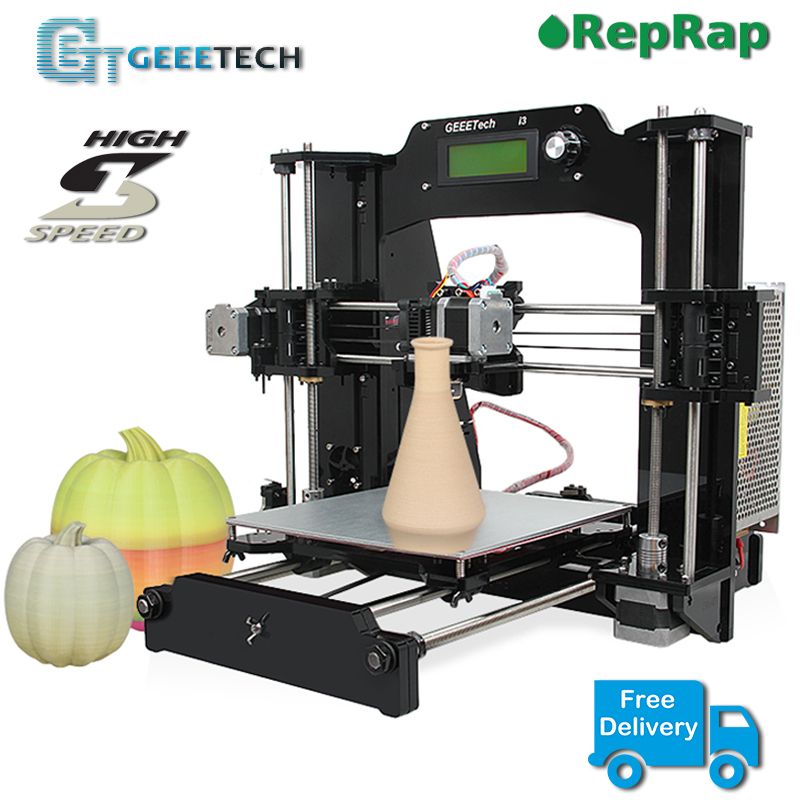 Also, many of these printers do not allow you to use more than one media at a time. In addition, they are slow and noisy, and the quality of their products is not as beautiful as that of expensive models. Also, the highest resolution that most entry-level printers offer is 100 microns.
Also, many of these printers do not allow you to use more than one media at a time. In addition, they are slow and noisy, and the quality of their products is not as beautiful as that of expensive models. Also, the highest resolution that most entry-level printers offer is 100 microns.
In addition, entry-level printers are not very durable. However, they are a great learning tool and can serve as a good stepping stone to dive deeper into the world of 3D printers. Now to answer the question, how much does a 3D printer cost? A typical entry-level printer will cost between $200 and $400.
3D printers for hobbyists
Hobbyists are those who have plunged into the world of 3D printing a little, fell in love with it and were carried away by it. They just want to improve their 3D printing skills by making models just for fun. Although 3D printers in this category are slightly better than entry-level models, they still cannot offer a result that goes beyond fun creativity. Their build volume is larger and you will be able to make more models with these printers. 3D printers for hobbyists allow you to create designs as small as 5-6 inches. Prints are thinner than entry-level printers and usually have better software.
Their build volume is larger and you will be able to make more models with these printers. 3D printers for hobbyists allow you to create designs as small as 5-6 inches. Prints are thinner than entry-level printers and usually have better software.
They are faster than entry-level models and allow more flexibility in material selection. This means that with machines in this category you can be even more creative. However, it is important to note that while they may be better than entry-level models, they are not very durable and their performance is not reliable. This means that they may not be able to withstand too much load, and you will not be able to use them for a long time. So how much does a 3D printer cost? They usually cost between $300 and $1500. There are many different products on the market in this price range and choosing the right one can be a daunting task. We recommend taking a look at this guide to 3D printers under $500 from HotRate.
3D Printers for Enthusiasts
Becoming a 3D printing enthusiast means you've decided to level up and now consider it more than just a hobby. This is a big leap that requires better and more powerful hardware than those in the hobbyist category. Printers in this category are known for their reliability and high build volume. They are quieter and slightly faster than hobbyist machines. In addition, they can print up to 12 inches in any dimension and allow for a wider choice of materials.
This is a big leap that requires better and more powerful hardware than those in the hobbyist category. Printers in this category are known for their reliability and high build volume. They are quieter and slightly faster than hobbyist machines. In addition, they can print up to 12 inches in any dimension and allow for a wider choice of materials.
However, they also have their downsides. Some of them only work with branded media, which means you can't just buy any type of media and run it into the printer. Also, while their prints and output are usually better than hobbyist printers, they cannot be used for production. This is because they are not professional machines and cannot be used for a long time.
You will need regular maintenance and repairs. Enthusiast 3D printers are ideal for regular use, but can break down with constant use. How much does a 3D printer in this category cost, you ask? Be prepared to spend $1500 to $3500.
Do you consider yourself experienced enough and would like to monetize your 3D printing skills? Or maybe you just want to take your hobby to the next level by creating professional models? Be that as it may, a professional 3D printer is one that is capable of working for you.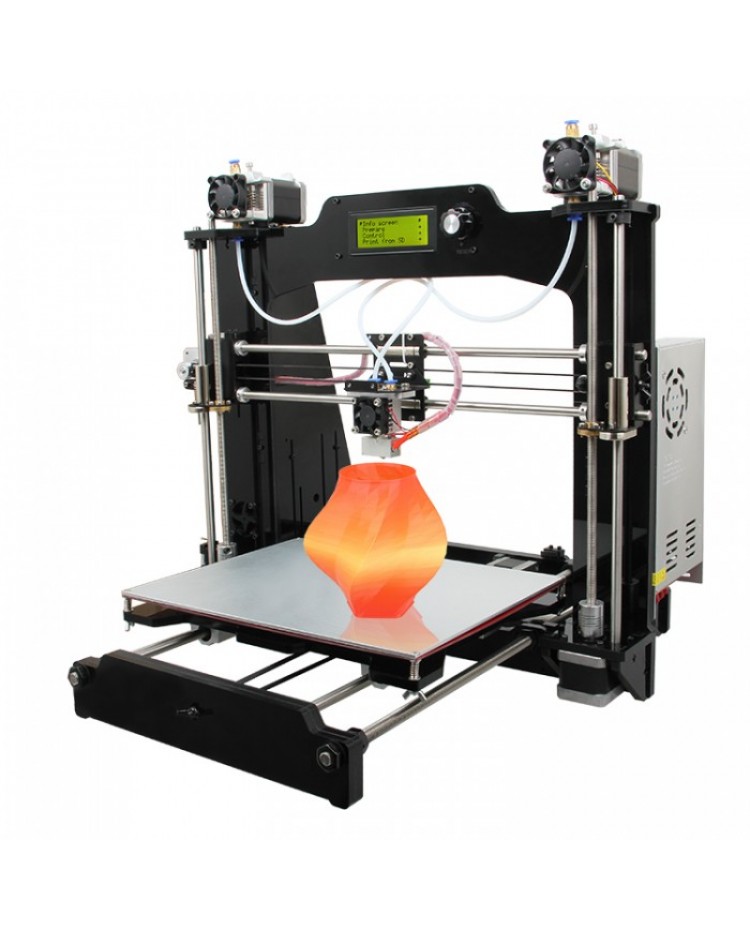 The print quality on them is first class and they are capable of printing up to 12 inches in any dimension. In addition, they are flexible regarding materials. You can use a variety of media in the machine without worrying about color or texture. They can also print faster than the categories we talked about earlier without sacrificing quality.
The print quality on them is first class and they are capable of printing up to 12 inches in any dimension. In addition, they are flexible regarding materials. You can use a variety of media in the machine without worrying about color or texture. They can also print faster than the categories we talked about earlier without sacrificing quality.
The price of a printer for a professional printing press is quite high. Therefore, to ensure that you are purchasing the best 3D printing machine, be sure to read real user reviews. Consider the pros and cons of the machine you want to purchase. Read up on how to maintain it, what materials to use, how best to set it up, etc. Make a list of important factors and go through them one by one.
The price of a printer for machines in this category is expensive, so checking all the right boxes before making a purchase decision is very important. So back to our original question, how much does a 3D printer cost in this category? A typical professional 3D printer costs between $3,500 and $6,000.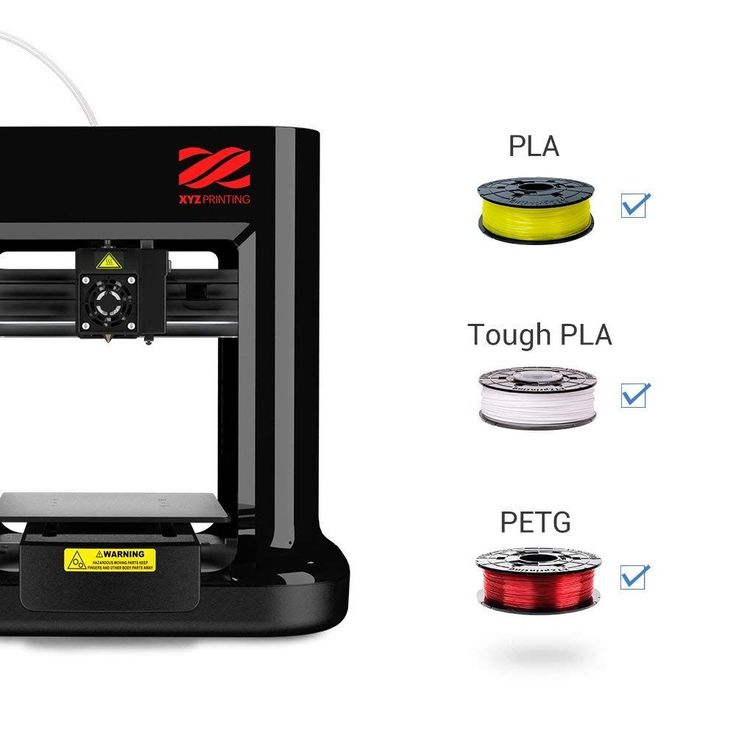 They are commonly used by robotics clubs, schools, and businesses large and small.
They are commonly used by robotics clubs, schools, and businesses large and small.
Industrial 3D printers designed for serious print businesses. They are simply the best and fastest cars in all categories. Their characteristics are at the highest level, they are very durable, as they are made of metal. In addition, their interfaces are user-friendly and they are very efficient. Industrial 3D printers are large and can accommodate many different types of custom prints. They also come with a hefty price tag, but that's to be expected given the fact that they're made for businesses and their construction is top-notch.
Industrial 3D printers are large and heavy, which can be a problem if you don't have enough space. Additionally, the cost of 3D printing with these machines can run into the thousands of dollars over time. Obviously, these machines consume more energy, materials and require a high level of maintenance than printers in other categories. That is why they are recommended only for enterprises and manufacturers. So how much does a 3D printer in this category cost? The price of a printer for industrial 3D machines ranges from $20,000 to $100,000.
So how much does a 3D printer in this category cost? The price of a printer for industrial 3D machines ranges from $20,000 to $100,000.
This page has been translated using machine translation. Suggest the best translation
Top 20 Inexpensive 3D Printers ($199 to $1000)
3DPrintStory Reviews Top 20 Inexpensive 3D Printers (from $199 to $1000)
Just 10 years ago, a 3D printer cost over $100,000. Today, you can easily find a cheap 3D printer for under $200. This is amazing.
Naturally, the lower the price, the more restrictions. Some of the printers on our list will not have a heated bed and the workspace will be small. Naturally, the quality of most of the models presented below cannot compete with more expensive counterparts.
Naturally, the quality of most of the models presented below cannot compete with more expensive counterparts.
But with a little patience and diligence, it is quite possible to achieve high-quality 3D printing on a printer that costs half the price of a flagship smartphone. And it's really cool!
Important note : All 3D printers in this top are supplied assembled by the manufacturer. If you have free time and want to spend less money, you can buy DIY kits and assemble the 3D printer yourself according to the instructions.
List of the best cheap 3D printers in the price range from $200 to $1000
| 3D printer | 3D printing material | Working space (mm) 900 | 459 | |||||
|---|---|---|---|---|---|---|---|---|
| Flashforge Finder | PLA | 140 x 140 x 140 | 499 | 10 | 010101 1.0 Pro | PLA | 150 x 150 x 150 | 499 |
XYZprinting da Vinci Jr. Mix 2.0 Mix 2.0 | PLA | 150 x 150 x 150 | 599 | |||||
| Printrbot Simple | PLA | 150 x 150 x 150 | 599 | |||||
| UP mini 2 | PLA, ABS | 120 x 120 x 120 | 599 | |||||
| Monoprice Maker Select Ultimate | PLA, ABS, exotic | 200 X 20045 | 699 | |||||
| ROBO | 908 PLA||||||||
| Dremel Idea Builder | PLA | 230 x 150 x 140 | 899 | |||||
| Printrbot Simple Pro | PLA | 200 x 150 x 200 | 999 | |||||
| Prusa i3 MK2 | PLA, ABS, exotic | 250 x 210 X 20045 | |
In the article we consider inexpensive 3Ds based etc.

If you want to buy them, even if you live in large cities such as Kyiv, Moscow, St. Petersburg, Minsk, it may turn out that these models will not be in the online stores of your city, or they may be with a decent mark-up relative to the cost that indicated in the article.
Since most of them are European / American, it is possible that they will not be in stores at all.
Therefore, before making a choice, I recommend looking directly at eBay, Amazon, Aliexpress, etc. - many sellers on these planforms deliver to the CIS countries within 1-4 weeks on average.
It is especially worth monitoring these platforms during the discount period - Black Friday or Chinese New Year (Aliexpress or Gearbest) - prices on such days can be 2 or more times lower than usual and it is worth waiting a few weeks.
Monoprice MP Select Mini ($199)
Probably the best 3D printer on our list. Why? Because the Monoprice MP Select Mini is an impressive development with a thoughtful, compact design at a very low price. This model has a quick-change steel material feed wheel, a cooler for cooling the nozzle, a color LCD screen, a heated table, plus the ability to transfer models for 3D printing via microSD or USB.
This model has a quick-change steel material feed wheel, a cooler for cooling the nozzle, a color LCD screen, a heated table, plus the ability to transfer models for 3D printing via microSD or USB.
The heated bed and wide temperature range of the extruder are especially pleasing, because for such a small price you get the opportunity to print in different materials: from ABS B to PLA or exotic materials like conductive PLA plastic, wood, metal-based composites and PVA.
For those who are worried about the lack of a guarantee - for such a price it is possible without it. This model is upgradeable. For example, you can install a new nozzle, change the table and add WiFi connectivity.
Small working space - 120 x 120 x 120 mm. Over time, this will definitely not be enough for you.
Specifications of cheap 3D printer Monoprice MP Select Mini
- Printer type: FDM;
- 3D printing materials: ABS, PLA, exotic;
- Working space: 120 x 120 x 120 mm;
- Minimum layer height: 100 microns;
- Number of extruders: 1;
- 3D printing speed: 55 mm/s;
- Compatible with materials from other manufacturers: yes;
- Heated table: yes;
- Nozzle diameter: 1.
 75 mm;
75 mm; - 3D printer control panel: yes;
- Connection: SD card, USB.
Back to 3D printer list
M3D Micro Retail ($249)
The M3D Micro 3D printer hit the market thanks to Kickstarter. This model was presented with an incredible price of $349.
The working space of the M3D Micro is 109 x 113 x 166 mm. There are several body color options. The company has implemented "Micro Motion Technology" - a set of innovative solutions - thanks to which you get excellent quality 3D printing at a small price.
Today, this inexpensive 3D printer already costs even less than the price announced on Kickstarter. You can buy it for $249 with a 12 month warranty. By the way, it is already possible to pre-order the next "pro" version.
Specifications of cheap 3D printer M3D Micro Retail
- Printer type: FDM;
- 3D printing materials: PLA;
- Working space: 116 x 109 x 113 mm;
- Minimum layer height: 50 microns;
- Maximum layer height: 350 microns;
- Number of extruders: 1;
- XY accuracy: 15 microns;
- Open Source: no;
- 3D printing speed: 55 mm/s;
- Compatible with materials from other manufacturers: yes;
- Heated table: yes;
- Nozzle diameter: 1.
 75 mm;
75 mm; - Control panel on 3D printer: no;
- Connection: USB.
Back to 3D printer list
XYZprinting da Vinci Mini ($289)
Da Vinci Mini is a successful attempt to make the 3D printer user-friendly. This model has only one button and 5 multi-colored indicators that reflect the current status of 3D printing. In addition, this affordable 3D printer is WiFi capable so you can control it over a network in your home, office or lab.
Unfortunately, you can only use the manufacturer's own 3D materials. On average, they cost 20% more than usual. However, the company also argues that the materials used (PLA) will be 100% non-toxic.
Specifications of cheap 3D printer XYZprinting da Vinci Mini
- Printer type: FDM;
- 3D printing materials: PLA;
- Working space: 150 x 150 x 150 mm;
- Minimum layer height: 100 microns;
- Number of extruders: 1;
- Open Source: no;
- Compatible with materials from other manufacturers: no;
- Heated table: no;
- Nozzle diameter: 1.
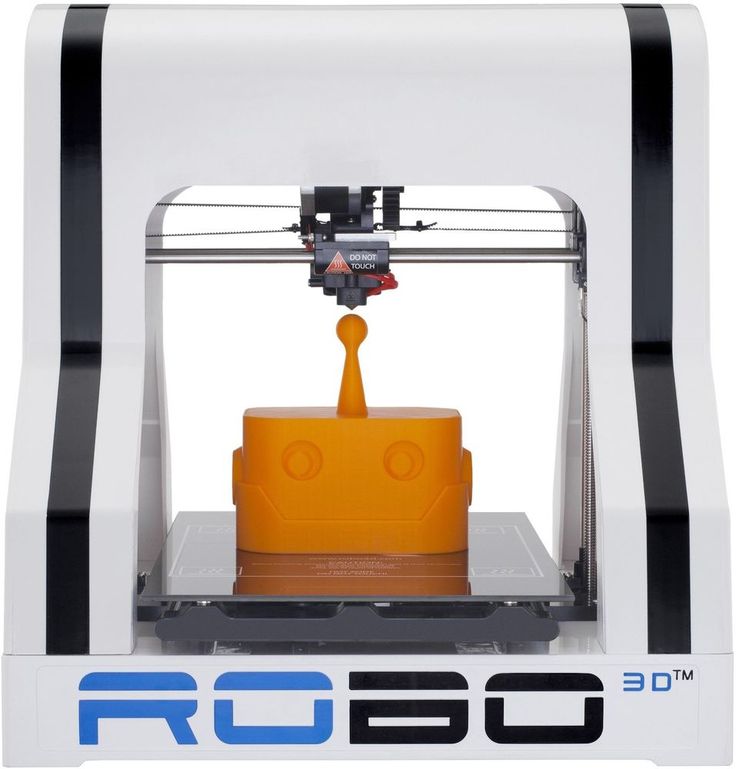 75 mm;
75 mm; - 3D printer control panel: yes;
- Connection: USB, WiFi.
Back to 3D printer list
Monoprice Maker Select V2($299)
The next cheap 3D printer with a good reputation is the Monoprice Maker Select V2.
This model is an analogue of the Wanhao Duplicator i3, which, in turn, borrowed the design from the Prusa i3. But this does not affect the quality, as the Monoprice Maker Select V2 is easy to use and gives excellent 3D printing results.
Monoprice Maker Select V2 design feature is that the power supply and control panel are placed outside the 3D printer. The working space of this model is 200 x 200 x 180 mm. And this is really a good indicator for the money.
Specifications of cheap 3D printer Monoprice Maker Select V2
- Printer type: FDM;
- 3D printing materials: ABS, PLA, exotic;
- Working space: 200 x 200 x 180 mm;
- Minimum layer height: 100 microns;
- Number of extruders: 1;
- Open Source: software;
- Compatible with materials from other manufacturers: yes;
- Heated table: yes;
- Nozzle diameter: 1.
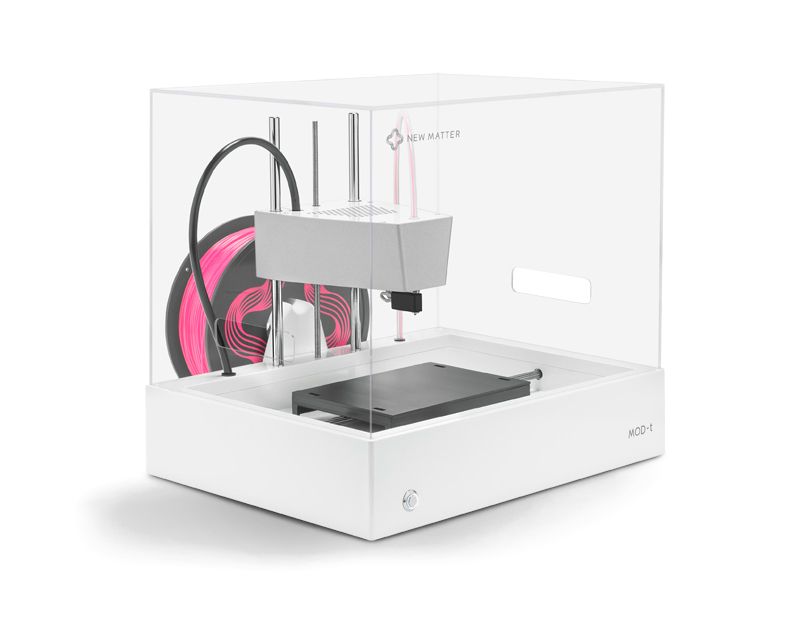 75 mm;
75 mm; - 3D printer control panel: yes;
- Connection: USB, SD card.
Back to the list of 3D printers
New Matter MOD-t ($299)
New Matter is a young startup that offers a 3D printer MOD-t - An interesting design with a minimalistic design. This cheap 3D printer is WiFi enabled so you can manage print settings and print from your computer, tablet or smartphone. The working space is 150 x 150 x 125 mm. Thanks to the case, the noise during its operation is reduced. But the most interesting and attractive thing about MOD-t is the price. Only $299. In general, this is an interesting, high-quality model.
Specifications of cheap 3D printer New Matter MOD-t
- Printer type: FDM;
- 3D printing materials: PLA;
- Working space: 150 x 100 x 125 mm;
- Minimum layer height: 100 microns;
- Number of extruders: 1;
- Open Source: no;
- Compatible with materials from other manufacturers: yes;
- Heated table: no;
- Nozzle diameter: 1.
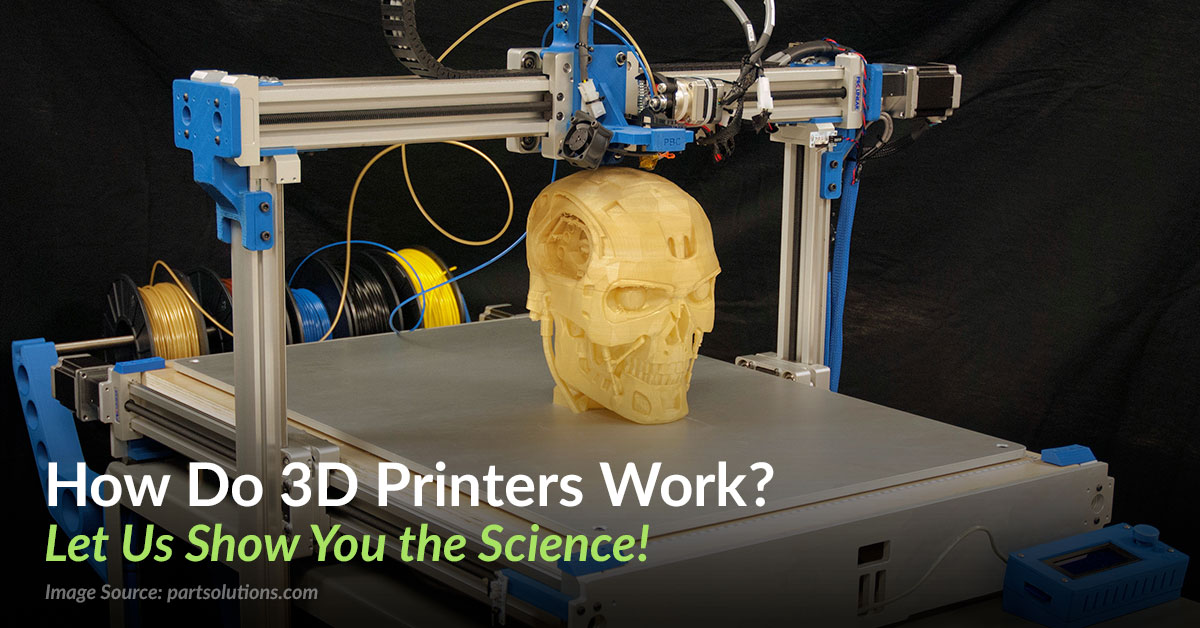 75 mm;
75 mm; - Control panel on 3D printer: no;
- Connection: USB, WiFi.
Back to the list of 3D printers
Printrbot Play ($399)
The Printbot Play is a very popular budget 3D printer that is often used in education. This inexpensive, reliable model, which is almost entirely made of metal.
The working space is 100 x 100 x 130 mm. Printbot Play has an extruder manufactured by the company itself - Alu Extruder v2. The body is made of powder coated steel and aluminium. SD slot provided.
You can upgrade the basic design of the Printrbot Play with a heated stand or increase the Y-axis stroke.

Back to the list of 3D printers
Wanhao Duplicator i3 Plus ($459)
The Wanhao Duplicator i3 Plus is an upgraded version of the popular Wanhao Duplicator i3 (which in turn is based on the Prusa i3).
The main features of this cheap 3D printer are a large working space of 200 x 200 x 180 mm, a steel frame, electronics integrated into the design itself (previously it was taken out separately), a slot for a full-size SD card and a touchscreen display for control.
Wanhao Duplicator i3 Plus Cheap 3D Printer Specifications
- Printer type: FDM;
- 3D printing materials: ABS, PLA, exotic;
- Working space: 200 x 200 x 180 mm;
- Minimum layer height: 100 microns;
- Number of extruders: 1;
- Open Source: design and software;
- Compatible with materials from other manufacturers: yes;
- Heated table: yes;
- Nozzle diameter: 1.75 mm;
- 3D printer control panel: yes;
- Connection: USB, SD card.

Back to the list of 3D printers
Flashforge Finder ($499)
FlashForge Finder is one of the newest 3D printers on our list. This affordable 3D printer offers an average working space of 140 x 140 x 140mm.
This Finder features a transparent sidewall design so you can view the 3D printing process from any angle. A color display is installed, it is possible to transfer data via WiFi network. The printer comes with some supplies and a USB flash drive, so you can start 3D printing almost immediately.
Specifications of cheap 3D printer FlashForge Finder
- Printer type: FDM;
- 3D printing materials: PLA;
- Working space: 140 x 140 x 140 mm;
- Minimum layer height: 100 microns;
- Number of extruders: 1;
- XY accuracy: 11 microns;
- Open Source: no;
- Compatible with materials from other manufacturers: yes;
- Heated table: no;
- Nozzle diameter: 1.
 75 mm;
75 mm; - 3D printer control panel: yes;
- Connection: USB, WiFi.
Back to 3D printer list
XYZprinting da Vinci Jr. 1.0 Pro ($499)
What's so special about the da Vinci Jr. 1.0 pro? This is a new model from XYZPrinting, which includes many advanced features, such as support for printing materials from other manufacturers and increased speed of 3D printing.
Also features an auto-calibration mechanism, a closed chamber with a unique cooling system, and a 0.3mm nozzle option for high-quality printing of fine model details. All in all, this is a great 3D printer with a lot of useful features and at a low price.
Specifications for cheap 3D printer da Vinci Jr. 1.0 Pro
- Printer type: FDM;
- 3D printing materials: PLA;
- Working space: 150 x 150 x 150 mm;
- Minimum layer height: 100 microns;
- Number of extruders: 1;
- Open Source: no;
- Compatible with materials from other manufacturers: yes;
- Heated table: no;
- Nozzle diameter: 1.
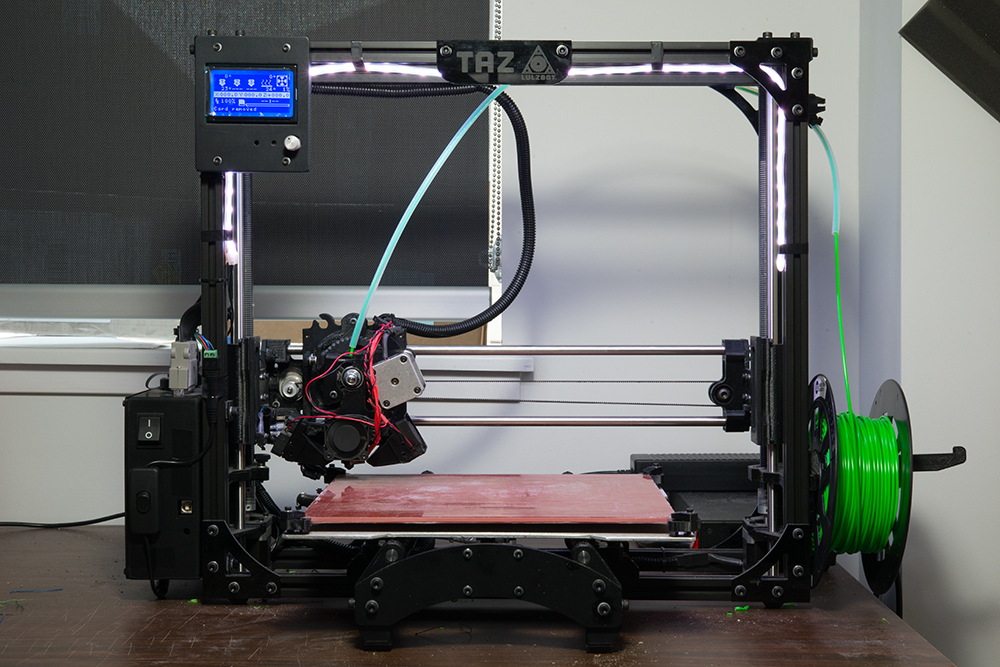 75 mm;
75 mm; - 3D printer control panel: yes;
- Connection: USB, SD card.
Back to 3D printer list
XYZprinting da Vinci Jr. Mix 2.0 ($599)
XYZprinting provides a wide range of low cost 3D printers. And paying attention to each model is quite difficult, although many of them are very interesting.
XYZprinting da Vinci Jr. Mix 2.0 stands out because it can print with two different materials and mix them to create multi-colored models. This dual-color 3D printing technology is rare in this price range ($500 to $1,000), so if you're interested in experimenting with multicolor printing, XYZprinting da Vinci Jr. Mix 2.0 is a great choice.
However, there is a drawback. This 3D printer is not compatible with materials from other manufacturers, so you will have to buy special materials from XYZprinting (as we mentioned above, they cost 20% more, but are not toxic).
Specifications of cheap 3D printer XYZprinting da Vinci Jr.
 Mix 2.0
Mix 2.0 - Printer type: FDM;
- 3D printing materials: PLA;
- Working space: 150 x 150 x 150 mm;
- Minimum layer height: 200 microns;
- Number of extruders: 1;
- Open Source: no;
- Compatible with materials from other manufacturers: no;
- Heated table: no;
- Nozzle diameter: 1.75 mm;
- 3D printer control panel: yes;
- Connection: USB, SD card, WiFi.
Printrbot Simple ($599)
Printrbot Simple is the flagship of the Printbot empire. This model has a great open design with a solid aluminum frame and a working space of 150 x 150 x 150mm. This inexpensive 3D printer comes fully assembled at a very good price. As you need and want to experiment, you can add a heated table and expand the workspace in the horizontal plane.
Specifications of cheap 3D printer Printrbot Simple
- Printer type: FDM;
- 3D printing materials: PLA;
- Working space: 150 x 150 x 150 mm;
- Minimum layer height: 100 microns;
- Number of extruders: 1;
- 3D printing speed: 80 mm/s;
- Open Source: design and software;
- Compatible with materials from other manufacturers: yes;
- Heated table: optional;
- Nozzle diameter: 1.
 75 mm;
75 mm; - Control panel on 3D printer: no;
- Connection: USB.
Back to the list of 3D printers
UP mini 2 ($599)
The UP mini 2 is a low cost 3D printer that packs in impressive design and functionality. For starters, it has a touch screen panel and the ability to connect via WiFi.
But the most interesting is further. Implemented power failure protection system. 3D printing will continue after the emergency stop. Built-in HEPA air filtration system. Automatic detection of the height of the extruder nozzle. A separate, closed container for the material, thanks to which it does not deteriorate under the influence of moisture from the environment.
Great 3D printer for a small price. The only thing that upsets me a little is the small working space - 120 x 120 x 120 mm.
Specifications of cheap 3D printer UP mini 2
- Printer type: FDM;
- 3D printing materials: PLA, ABS;
- Working space: 120 x 120 x 120 mm;
- Minimum layer height: 150 microns;
- Maximum layer height: 350 microns;
- Number of extruders: 1;
- Open Source: no;
- Compatible with materials from other manufacturers: yes;
- Heated table: yes;
- Nozzle diameter: 1.
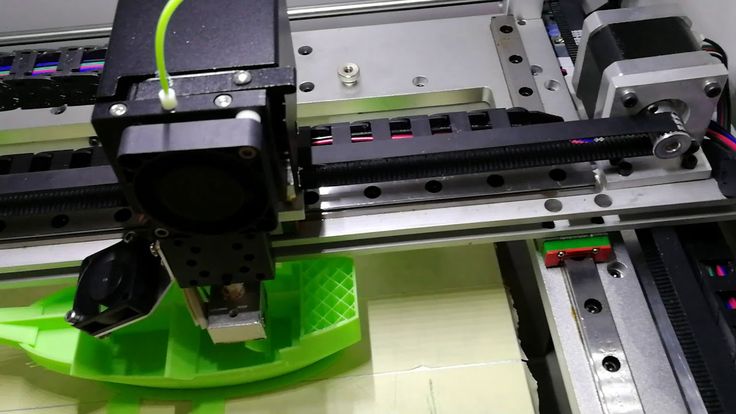 75 mm;
75 mm; - 3D printer control panel: yes;
- Connection: USB, WiFi.
Back to the list of 3D printers
Monoprice Maker Select Ultimate ($699)
The Monoprice Maker Select Ultimate is an extraordinary beast that combines elements from two leaders in the world of 3D printing - Zortax and Ultimaker. The Monoprice Maker has an aluminum perforated printing table, which was offered in the Zortax M200 (thanks to this table, the grip of the base of the model with the table is much better), and the software part is almost identical to Ultimaker 2 (very user-friendly interface and functionality).
This model uses a "Bowden extruder", that is, the feed blocks and nozzle are separated, unlike direct feed. This improves reliability and reduces the likelihood of 3D printing errors (although, most likely, it was necessary to sacrifice printing speed, as the weight of the printing unit increases). Given the cost, this is a good model, the analogues of which are much more expensive.
Specifications of cheap 3D printer UP mini 2
- Printer type: FDM;
- 3D printing materials: PLA, ABS, exotic;
- Working space: 200 x 200 x 175 mm;
- Minimum layer height: 20 microns;
- Number of extruders: 1;
- Open Source: no;
- Compatible with materials from other manufacturers: yes;
- Heated table: yes;
- Nozzle diameter: 1.75 mm;
- 3D printer control panel: yes;
- Connection: USB, SD card.
Back to the list of 3D printers
Robo C2 ($799)
The Robo C2 is a small 3D printer with tons of connectivity options. Using a specialized application, you can monitor the status of 3D printing from your smartphone or tablet. It can be connected to a Chromebook. Thanks to the built-in slicing program, you do not need to install additional printing software.
Probably the most impressive is the integration with Amazon Alexa. Users can stop, cancel and check the status of 3D printing in real time using voice commands.
What does this inexpensive 3D printer offer? Working space 127 x 127 x 150 mm. The 3D printing speed is 300 mm/s and the resolution is 20 microns. There is a built-in 3.5'' color touch screen, a system for monitoring the amount of remaining material for printing, automatic calibration and a removable self-aligning print platform. The only drawback is that the table is not heated, so you have to use PLA plastic.
Specifications of cheap 3D printer Robo C2
- Printer type: FDM;
- 3D printing materials: PLA;
- Working space: 127 x 127 x 150 mm;
- Minimum layer height: 20 microns;
- Number of extruders: 1;
- Open Source: software;
- Compatible with materials from other manufacturers: yes;
- Heated table: no;
- Nozzle diameter: 1.75 mm;
- 3D printer control panel: yes;
- Connection: USB, WiFi.
Back to the list of 3D printers
Wanhao Duplicator 4S ($829)
The Duplicator 4S has 2 extruders. It's essentially a copy of the MakerBot Replicator. Hidden behind a steel body is the MK10 material feed mechanism, which is currently the easiest to use and most sought after in the market for 3D printer components.
It's essentially a copy of the MakerBot Replicator. Hidden behind a steel body is the MK10 material feed mechanism, which is currently the easiest to use and most sought after in the market for 3D printer components.
One of the features of this model is a high-precision material feed wheel, which ensures the same filament feed speed. The Duplicator 4S is equipped with a 0.4mm precision nozzle.
Specifications of cheap 3D printer Duplicator 4S
- Printer type: FDM;
- 3D printing materials: ABS, PLA, exotic;
- Working space: 225 x 145 x 150 mm;
- Minimum layer height: 100 microns;
- Maximum layer height: 500 microns;
- Number of extruders: 2;
- XY accuracy: 11 microns;
- 3D printing speed: 40 mm/s;
- Open Source: software;
- Compatible with materials from other manufacturers: yes;
- Heated table: yes;
- Nozzle diameter: 0.4 mm;
- 3D printer control panel: yes;
- Connection: USB, SD card.
 Polar 3D Printer This causes the table to rotate and the print head to move up, down, right, and left.
Polar 3D Printer This causes the table to rotate and the print head to move up, down, right, and left. Thanks to the polar coordinate system, this 3D printer is powered by two stepper motors, so it consumes less power. In addition, it turned out to realize a larger size of the working area: 203 (table diameter) x 152 (Z coordinate) mm.
Rated $899, but there are special discounts for educational institutions. The discounted price is only $599.
Specifications of cheap 3D printer Polar 3D
- Printer type: FDM;
- Materials for 3D printing: PLA;
- Working space: 203 (table diameter) x 152 (Z-coordinate) mm;
- Minimum layer height: 50 microns;
- Maximum layer height: 400 microns;
- Number of extruders: 1;
- 3D printing speed: 40 mm/s;
- Open Source: no;
- Compatible with materials from other manufacturers: yes;
- Heated table: no;
- Nozzle diameter: 1.75 mm;
- Control panel on 3D printer: no;
- Connection: USB, WiFi, SD card.
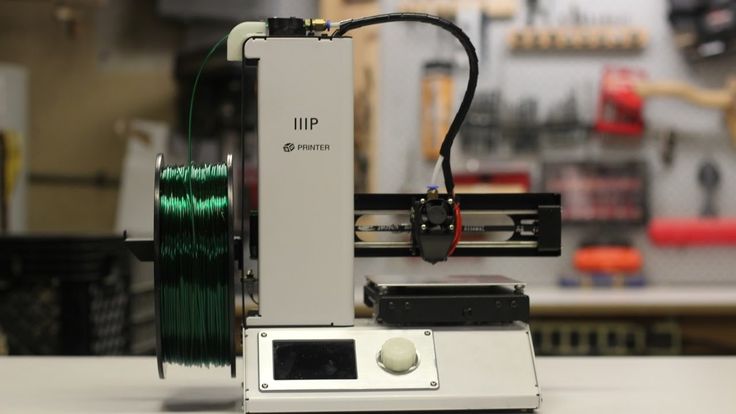
Back to 3D printer list
FlashForge Creator Pro ($899)
You've probably heard of this 3D printer. FlashForge Creator Pro is very similar to Makerbot Replicator 2X. This inexpensive 3D printer has 2 extruders, it has a steel closed body.
Other features include a table sizing system, and a guide screw that makes the guide system more stable and durable. The design is nothing special, but this model has earned positive reviews from the 3D community due to its reliability, versatility and ease of use.
Specifications of cheap 3D printer FlashForge Creator Pro
- Printer type: FDM;
- 3D printing materials: ABS, PLA, exotic;
- Working space: 225 x 145 x 150 mm;
- Minimum layer height: 100 microns;
- Maximum layer height: 500 microns;
- Number of extruders: 2;
- XY accuracy: 11 microns;
- 3D printing speed: 40-100 mm/s;
- Open Source: design and software;
- Compatible with materials from other manufacturers: yes;
- Heated table: yes;
- Nozzle diameter: 1.
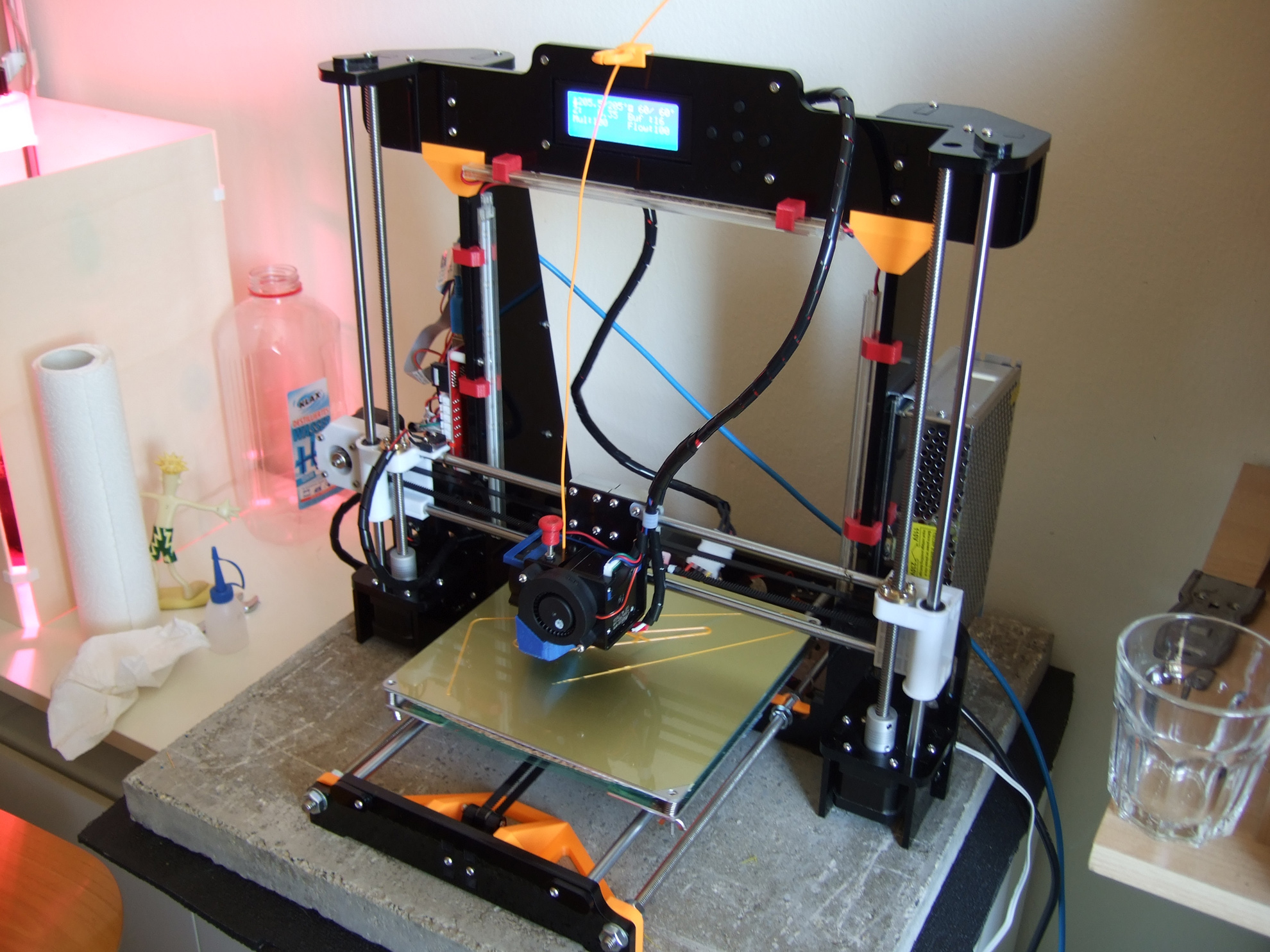 75 mm;
75 mm; - 3D printer control panel: yes;
- Connection: USB, SD card.
Back to 3D Printer List
Dremel Idea Builder ($899)
The Idea Builder is plug and play. This 3D printer is designed by Dremel. It has a color touch screen display. Sufficiently large working space - 230 x 150 x 140 mm. Unfortunately, the table is not heated. On the other hand, since only PLA plastics can be used, this model is great for classrooms and teaching labs.
Specifications of cheap Dremel Idea Builder 3D printer
- Printer type: FDM;
- 3D printing materials: PLA;
- Working space: 230 x 150 x 140 mm;
- Minimum layer height: 100 microns;
- Number of extruders: 1;
- Open Source: no;
- Compatible with materials from other manufacturers: no;
- Heated table: no;
- Nozzle diameter: 1.75 mm;
- 3D printer control panel: yes;
- Connection: USB, SD card.
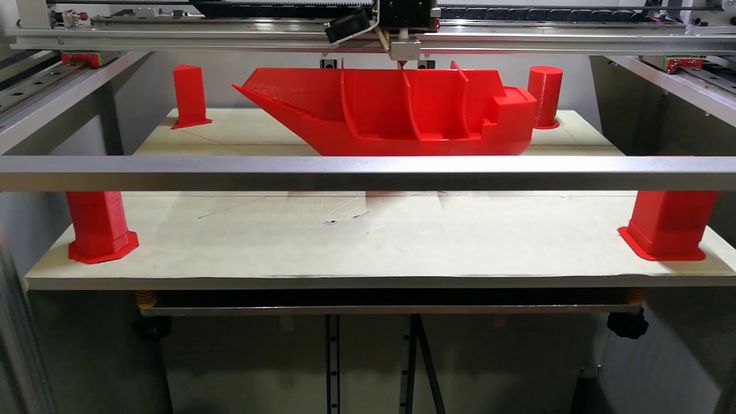
Back to the list of 3D printers
Printrbot Simple Pro ($999)
Printrbot Simple Pro is a significant upgrade from the original Simple. Same open design, no body. Like its predecessor, the Printrbot Simple Pro is compact and portable. All-metal construction for excellent vibration damping and shock resistance.
The main differences are the built-in color touch screen, the ability to connect via WiFi and the free cloud service (optional), which greatly improves the 3D printing process. Simple Pro has a 32-bit processor, which ensures smooth and fast movements. And at the same time, this model is included in our top 20 cheap 3D printers, since its cost is $999.
Specifications of cheap 3D printer Printrbot Simple Pro
- Printer type: FDM;
- 3D printing materials: PLA;
- Working space: 200 x 150 x 200 mm;
- Minimum layer height: 50 microns;
- Number of extruders: 1;
- Open Source: design and software;
- Compatible with materials from other manufacturers: yes;
- Heated table: optional;
- Nozzle diameter: 1.
 75 mm;
75 mm; - 3D printer control panel: yes;
- Connection: USB, WiFi.
Back to 3D printer list
Prusa i3 Mk2 ($999)
This is one of the best 3D printers you can buy in this price range. All nodes are open-source licensed and part of the Rep-Rap project, so there are many copies around ... but all replicas are worse than the original.
The Prusa i3 Mk2 is equipped with a heated table that has technology to compensate for temperature differences in the center and corners. There is an automatic calibration system. And of course, amazing documentation. This is an extremely versatile 3D printer that you will 100% appreciate when you start printing with unusual materials such as PLA, PET, HIPS, Flex PP or Ninjaflex, etc.
The Prusa i3 Mk2 is a 3D printer that is constantly being developed and supported by the manufacturer. Its developer Josef Prusa regularly adds new features, software and design improvements (for example, the ability to color 3D print).

Learn more


